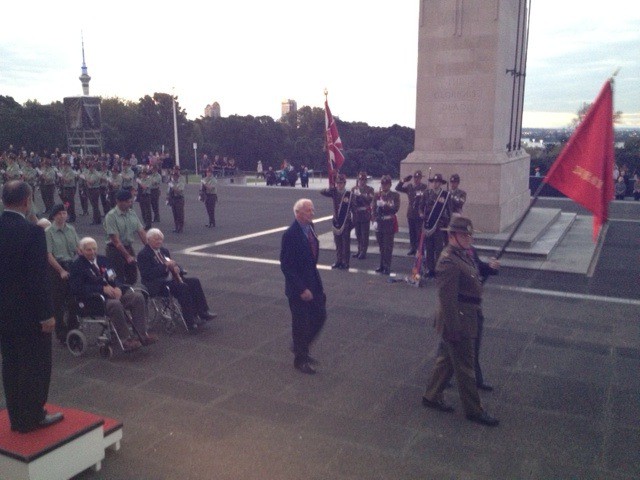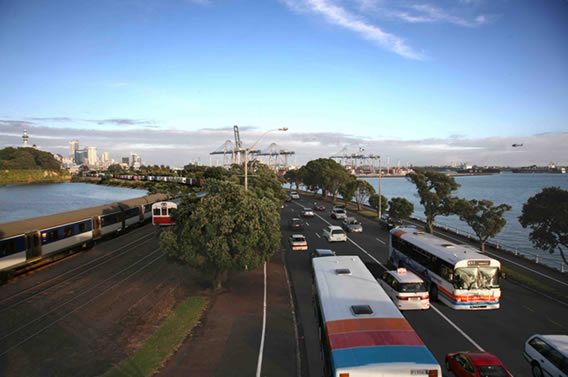The wreck of the Niagara – a clear and present danger
Readers of this site will be aware of the concerns I have been raising about the scale of pollution of our inner harbour and streams from sewage- contaminated stormwater. While the problem has been down-played by officialdom for years, thanks to the lobbying of the locally-based ‘Coalition’ (‘Stop Auckland Sewage Overflows’) and other citizens, the council appears to be moving out of the state of denial it was in only a few months ago and is promising to tackle the problem. We shall see.
While the pollution of the Waitematā is real and on-going, over the last year I have been involved in raising awareness of another threat to our marine environment; this time in the outer Hauraki Gulf. While this threat is still only a potential one, it could be catastrophic in its consequences. The problem is oil trapped in the wreck of the Niagara.
RMS Niagara was a NZ Union Steam Shipping Co trans-Pacific liner sunk early in World War II in a mine ambush laid by a German navy raider. Niagara was built in 1913 for the Canadian – Australasian service. Such was its size and opulence she was known as ‘the Queen of the Pacific’.

RMS Niagara – ‘Queen of the Pacific’ – sunk by the German Navy June 1940. Painting by E.B. Norton. (Australian National Maritime Museum Collection, courtesy Searov Technologies).
On 20 June 1940 (only two weeks after the Dunkirk evacuation), a few hours after sailing from Queens Wharf bound for Suva, Niagara struck the mine and sunk. Fortunately all 349 passengers and crew were rescued (and most of the 8 tonnes of gold she was carrying later salvaged). Niagara was also carrying a cargo of armaments, half the rifles and ammunition in New Zealand, hastily dispatched to Great Britain in her hour of need after Dunkirk.
The wreck lies at a depth of 120 metres, equidistant from the Mokohinau and Hen and Chicken Islands, just over 2 nautical miles inside the Auckland Coastal Marine Area and the Hauraki Gulf Marine Park. The alarm was first raised by diver and conservationist Wade Doak and ROV expert Keith Gordon. Keith who wrote the authoritative history of the ship, ‘Deep Water Gold’, believes there is at least 1600 tonnes of bunker oil trapped within the wreck. He points out that other wartime wrecks are now collapsing and releasing oil – creating environmental headaches for Pacific nations like the Solomon Islands and the Federated States of Micronesia. After being contacted last year by marine biologists and seabird scientists, I got involved. Since that time I have been working with Keith, and an international marine salvage expert Clive Sharp, trying to get something done about it.
Unfortunately officialdom ie Maritime NZ, the leading responsible agency, Auckland Council and Northland Regional Council are still very much in denial. To get around this wall of denial we decided to approach the regional conservation boards. In response to our joint presentation, the Auckland Conservation Board chair Lyn Mayes wrote to Minister of Conservation Maggie Barry and Transport Minister Simon Bridges: ‘The Board strongly recommends that funding is allocated to remove the oil from the Niagara now rather than waiting until the wreck erodes further and fuel is spilled into the Gulf creating an ecological disaster. Oil slicks up to 15 km long have already been seen from the wreck and a major spill would affect many of the 27 species of seabirds that live in the Hauraki Gulf, including Cook’s petrel, NZ storm petrel, black petrel, Pycroft’s petrel and fairy tern. Ecologists have expressed their concern about the risk to breeding colonies and habitat…Accordingly, we ask that urgent attention is given to making the wreck safe and removing the fuel oil from the Niagara. This is a preventable environmental disaster. It is better to act now to minimise the effects than to let the wreck totally fail in the next decade or so and have a catastrophic effect.’
In August, Keith, Clive and I, along with Karen Baird of Forest & Bird and Birdlife International, presented to the Northland Conservation Board where we received similar support. There has also been growing media interest.
The amount of oil that escaped from the Rena in 2011 was only 350 or so tonnes and we saw the damage it caused. The amount of oil in the Niagara is estimated to be four or five times that. The outer Gulf is an ecological hotspot – of world importance, especially for seabirds. It is also near some of our most important marine protected areas, the Poor Knights, Leigh and Tawharanui Marine Reserves. Waiting to react to a major pollution event is not tenable. The chemical dispersants normally used to deal with oil spills are highly toxic in themselves, as damaging to marine life as the oil. Preventative action is therefore needed. The oil needs to be extracted. The sinking of the Niagara was an act of war against New Zealand – 72 years after the Second World War, this act of war still presents a clear and present danger.
A version of this article appears in the October 2017 edition of Ponsonby News.




Hi there Mike
first thanks for raising this issue, it seems no one else has to any extent. I am amazed that the governmental entities responsible apparently are not interested (well not amazed so much as disgusted). Can you advise if any progress has been made here with the change of govt, or is everyone happy to wait until the oil hits the beaches?
appreciate any response you are able to make
regards
patrick flannery
Freemans Bay Auckland
Thanks Patrick,
I wrote to Ministers Sage (Conservation) and Twyford (Transport) on 12 December. The letter and accompanying file of background info was emailed to their respective offices that day. An emailed automated acknowledgement came back from the Minister Sage’s office on 22 December. Twyford’s office acknowledged receipt on 11 January. I have yet to receive a response to the letter from either Minister. ‘Plus ca change, plus c’est la meme chose’??
Hi Mike,
Thanks for being proactive in trying to get something done about removing the oil from this boat. Do you have any more updates for us as to wether anything will be done any time soon.
Dan Joint
Western Springs
Thanks Dan,
Our (ROV expert Keith Gordon, author of ‘Deep Water Gold – the story of RMS Niagara’, Keith Sharp, international marine salvage expert and myself’s) request to meet with give a presentation to the Minister of Conservation, Eugenie Sage and Transport Minister, Phil Twyford (together or separately) after three months delay was politely rebuffed. A surprising and very disappointing response from the new government.